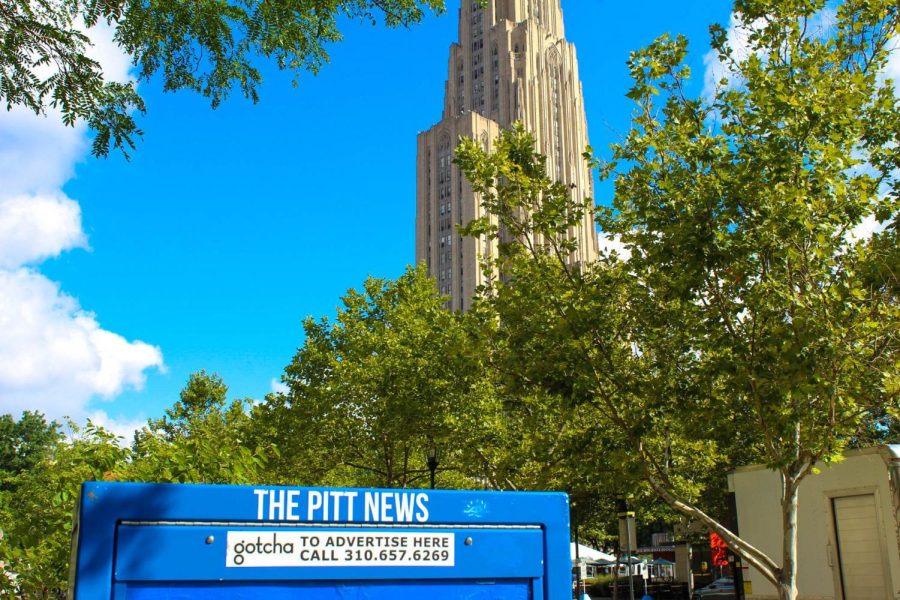Stamatakis: TSA should rethink its approach to national security
April 4, 2012
I have a solution to the bomb threat problem: full-body pat-downs in front of every bathroom. I have a solution to the bomb threat problem: full-body pat-downs in front of every bathroom.
Since many of the notices seem to be coming via black-marker scribbles on bathroom stalls, according to the Pittsburgh Post-Gazette, a full-body pat-down will make all of us feel safer. Professionals at every door will feel us up as we enter a restroom, and, when they find a black marker, they’ll put it in a special box and the campus will be safe again.
A few other measures would also have to be taken. Students will need to remove their shoes (somebody might use them to slip in a marker), and they’ll need to give up anything that might serve the same function as a marker. Just comply, and fly up those elevators.
Wait, you have a problem with this because it’s hard to find a marker through a pat-down? You’re claiming that more than 70 percent of markers would still make it through anyway? To you naysayers, I say: Shame on you. Even if this system is only 30 percent effective, we can all agree it’s still a useful procedure: It would have reduced the number of threats in the past months from x to y. A small benefit, but a legitimate one nonetheless.
Wait, you say you have a problem with this because it might be expensive? You’re claiming that a series of bomb threats doesn’t justify a $2.4 billion pat-down program? Shame on you again. If you consider yourself a real Pitt student, you should cherish the incremental benefits that might theoretically result from aggressive pat-downs.
Wait, you say that this won’t even address the issue at hand? You’re claiming that potential bomb threateners will just learn how to smuggle in markers, or that people will simply phone in threats or write them on chalkboards rather than stalls? Once more, I say shame on you, because you are once again missing the point. We will simply go wherever they go, creating security checkpoints at all doors and parking garages until you feel 100 percent safe.
Then we’ll finally be out of harm’s way. It might take 40 minutes to enter a University building, but at least we’ll know that we might possibly be a bit safer.
And if you don’t like my idea, I will simply have to join the Transportation Security Administration.
The TSA, the post-9/11 governmental organization tasked with keeping our skies safe, actually performs about as well in real life as this hypothetical bathroom security, with 70 percent of weapons escaping detection at some major airports, according to ABC News, and an estimated $2.5 billion slated to fund full-body X-ray scanners that can’t detect certain explosives and weapons. If there is an actual money pit within the federal government, the TSA is it.
Yet the public doesn’t seem to care. Support for the scanners, which blogger Jonathan Corbett demonstrated can’t even even detect metals in certain situations, is at 81 percent, according to a CBS News poll. And while the TSA’s overall 38 percent approval rating in a Reason-Rupe poll might seem low, it still exceeds Congress’s and is comparable to the president’s. Funding-wise, the TSA is a governmental prom queen, enjoying rare bipartisan support even amid the bitterest funding fights.
The organization’s popularity is confusing — if any other agency yielded the same high costs and low benefits, it would be met with widespread protest. Imagine if the Pitt police actually decided that pat-downs at every door were a good idea. It’s hard to imagine a world where 81 percent of students would find this OK. Even discounting privacy concerns, we would all consider these measures wasteful. Of course, groundless bomb threats and a major terrorist attack are two entirely different crimes — TSA was created after 9/11, and the enormity of that tragedy probably accounts for the extensiveness of their current security measures.
Nevertheless, the University has developed a policy that the federal government should adhere to. Based on news reports, the administration and local law enforcement seem to be holding an exhaustive investigation. And when a threat is discovered, the police respond quickly and efficiently, conducting thorough searches while allowing the community to act appropriately — the equivalent of the police’s response to the thwarted underwear and Times Square bombings of 2009 and 2010, respectively.
What the Pitt police do not do is try to catch those responsible right before a threat occurs. They realize this strategy is ineffective, both financially and practically. The federal government and the TSA, sadly, do not seem to realize this.
Contact Nick at nick [email protected].







